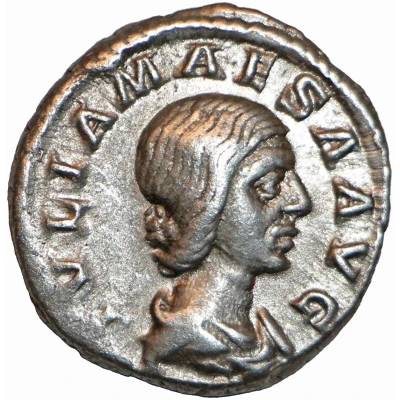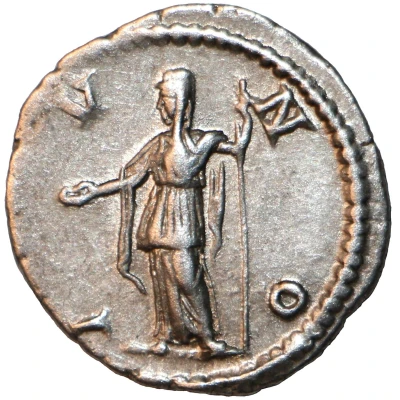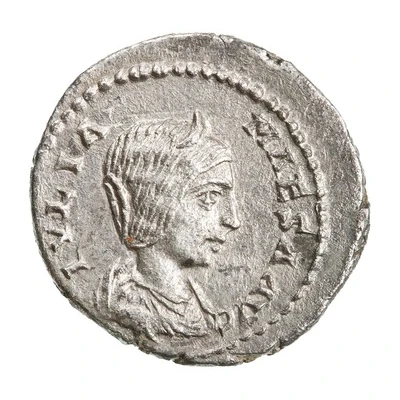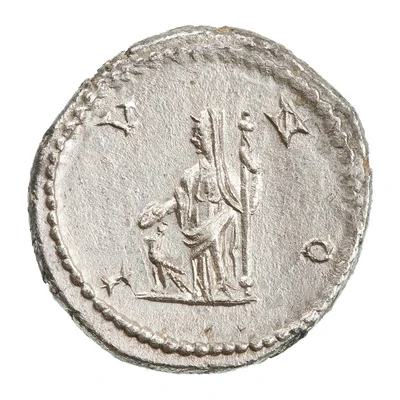


© John Conduitt (CC BY-SA)
Denarius - Julia Maesa IVNO; Juno
| Silver | 2.9 g | 19.5 mm |
| Issuer | Rome › Roman Empire (27 BC - 395 AD) |
|---|---|
| Emperor | Elagabalus (Sextus Varius Avitus Basianus) (218-222) |
| Type | Standard circulation coin |
| Years | 218-222 |
| Value | Denarius (½) |
| Currency | Antoninianus, Reform of Caracalla (AD 215 – 301) |
| Composition | Silver |
| Weight | 2.9 g |
| Diameter | 19.5 mm |
| Shape | Round (irregular) |
| Technique | Hammered |
| Orientation | Variable alignment ↺ |
| Demonetized | Yes |
| Updated | 2024-10-05 |
| Numista | N#276922 |
|---|---|
| Rarity index | 90% |
Reverse
Juno, veiled, draped, standing left, holding patera in extended right hand and sceptre in left hand.
Script: Latin
Lettering: IVNO
Unabridged legend: Iuno.
Translation: Juno.
Comment
Mass varies: 2.581–3.23 g;Diameter varies: 17–20.8 mm;
Example of this type:
American Numismatic Society (ANS)
Source:
Online Coins of the Roman Empire (OCRE)
Interesting fact
The Denarius - Julia Maesa (IVNO; Juno) coin was issued during the reign of Emperor Elagabalus, who was known for his controversial and unconventional reign. Elagabalus was a member of the Severan dynasty and was known for his extreme religious views and his efforts to introduce Eastern religious practices to Rome. The coin's design, which features Juno, the Roman goddess of marriage and childbirth, on the reverse, may have been a nod to Elagabalus' efforts to promote the cult of the Roman goddess Cybele, which was associated with fertility and the protection of the state. Despite its historical significance, the coin is relatively rare and highly sought after by collectors today.
Price
| Date | Mintage | VG | F | VF | XF | AU | UNC |
|---|---|---|---|---|---|---|---|
| ND (218-222) | - | - | - | - | - | - |
Values in the table are based on evaluations by sales realized on Internet platforms. They serve as an indication only for Denarius - Julia Maesa (IVNO; Juno) (218-222) coin.

